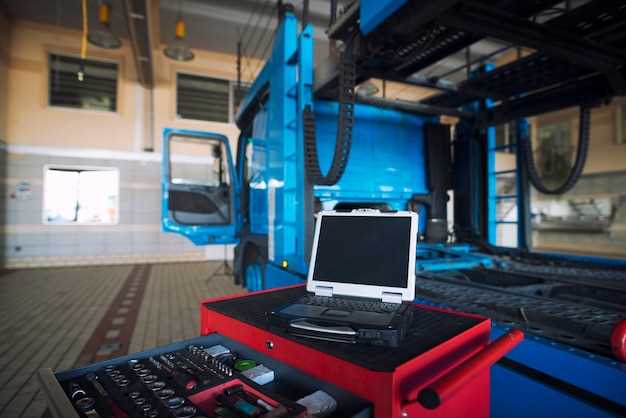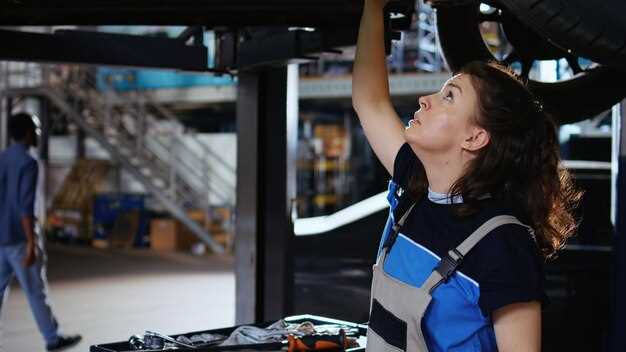
Establishing a successful truck repair shop involves careful planning and execution. One of the first critical steps is to design an efficient layout for your shop. The layout not only influences workflow but also affects customer satisfaction and overall productivity. A well-organized space allows mechanics to access tools and equipment easily, reducing downtime and increasing the speed of service.
Consideration of the shop size and the specific services offered is paramount. Each repair station should be equipped with the necessary tools and machinery tailored to the types of trucks you will service. By prioritizing a spacious and functional design, you create an environment where high standards of repairs can be consistently met.
Moreover, zoning different areas for specific tasks–such as diagnostics, repairs, and waiting–enhances both efficiency and customer experience. Keeping these principles in mind will set a solid foundation for your truck repair shop, positioning it for success in a competitive market.
Assessing Market Demand and Identifying Target Customers

Successfully setting up a truck repair shop begins with a clear understanding of market demand and the identification of target customers. Conduct thorough market research to gauge the demand for truck repair services in your area. This research should include analyzing the number of trucks in operation, the existing competition, and the specific services that are in high demand.
Utilize surveys and interviews with local trucking companies to gather insight into their repair needs and preferences. Pay attention to the types of trucks they operate, the common issues they face, and the frequency of repairs. This information will help you tailor your offerings to meet specific demands and create a competitive edge.
Consider the layout of your repair shop as it can significantly impact workflow and customer satisfaction. Efficiently organizing workstations allows for seamless operations, enabling technicians to address repairs promptly. A well-structured layout can also facilitate better communication with customers, helping to build trust and encourage repeat business.
Identify your target customers based on the data collected. Focus on segments such as small fleet owners, independent truck drivers, or large logistics companies. Each group may have distinct requirements and expectations, which should influence your marketing strategies and service offerings.
In addition to understanding who your customers are, consider their geographic proximity. Establishing a truck repair shop in a location that is easily accessible to target clients can greatly improve your shop’s visibility and convenience, which in turn can drive higher demand for your services.
Continuously assess market trends and customer feedback to adapt your business strategies. Adapting to shifting demands will not only enhance your service offerings but will also solidify your position within the market, paving the way for long-term success.
Designing an Optimized Shop Layout for Maximum Productivity
Creating an efficient layout for your truck repair shop is essential for maximizing productivity and ensuring smooth operations. A well-thought-out shop layout allows for better workflow, reduces downtime, and enhances customer satisfaction.
The first step in designing your shop’s layout is to categorize the different zones based on tasks. These zones typically include areas for vehicle reception, diagnostics, repair, and quality control. Ensure that each zone is clearly defined to minimize confusion and streamline processes. For instance, keep the reception area close to the entrance for easy customer access while placing the repair area further inside to reduce noise and distractions.
Flow plays a crucial role in the layout process. Aim for a linear or circular workflow that allows technicians to move seamlessly from one task to another. This design minimizes unnecessary movement and time wastage. Position tools and parts storage near the workstations to ensure that mechanics can readily access them without leaving their immediate workspace.
Incorporating dedicated space for specialized equipment is another important aspect. Whether it’s hydraulic lifts, tire changers, or alignment machines, ensure that equipment is placed strategically to maximize efficiency and avoid bottlenecks. Leave adequate space around each piece of equipment to facilitate safe and easy access.
It is also vital to consider the integration of safety measures within the shop layout. Designate walkways, emergency exits, and storage areas for hazardous materials. Ensure proper signage is prominently displayed to guide both employees and clients in navigating the shop safely.
Lastly, regular reviews and adjustments of the shop layout are necessary as the business evolves. Gather feedback from your staff to identify areas that may need improvement, ensuring that the design continually supports productivity and a positive work environment.
Implementing an Organized Workflow for Repairs and Maintenance

Establishing a systematic layout is crucial for optimizing the workflow within your truck repair shop. An organized shop allows mechanics to efficiently access tools, parts, and equipment, which minimizes downtime and enhances productivity.
First, design a dedicated area for each type of repair or maintenance service. This includes an engine diagnosis space, an area for tire changes, and sections for bodywork. Such a layout facilitates a clear workflow, ensuring that repairs can progress smoothly from one station to the next.
Next, implement a standardized workflow process. Begin by creating checklists for various repair types. Each mechanic should follow these checklists to ensure no step is overlooked, thereby enhancing the quality of service. These checklists should also include required tools and parts, which helps prevent delays caused by searching for items.
Incorporate a scheduling system to manage incoming jobs effectively. Use software that tracks vehicle status, opens job orders, and assigns tasks to mechanics based on their expertise and availability. This organized approach helps streamline operations and keeps everyone informed about their responsibilities.
Ensure proper training for all staff on the established workflow and layout. Regular workshops can reinforce best practices and highlight areas for improvement. An engaged team is essential for maintaining an efficient workflow, as they are the first responders to the ground realities of daily operations.
Continually assess and optimize your workflow. Gather feedback from your mechanics on the layout and processes. Adjustments based on real-world experiences can lead to significant enhancements in efficiency and effectiveness over time.
By implementing an organized workflow for repairs and maintenance, your truck repair shop will experience increased productivity, reduced errors, and ultimately, higher customer satisfaction.




